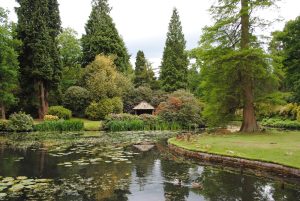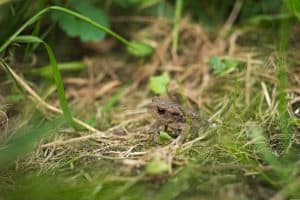If you have a frog or toad in your garden, don’t be alarmed! These amphibians are actually helpful animals that eat pests like insects. However, there are a few things you should keep in mind if you want to keep these creatures around. What should I do with a frog in my garden? In this blog post, we’ll give you some helpful tips on what to do with a frog in your garden.
Difference between frogs and toads

Frogs and toads are both amphibians, but there are a few key differences between these two types of animals. For one, frogs tend to have smooth skin while toads have dry, bumpy skin. Toads also tend to spend more time on land than in water, while frogs usually live near ponds or other bodies of water.
Native amphibians are declining
Unfortunately, native amphibian populations are declining all over the world. This is due to a variety of factors, including loss of habitat, pollution, and disease. So, if you have amphibians in your garden, you’re actually helping these animals!
What should I do with a frog in my garden? Helpful Tips
Frogs and Toads Eat Insects:
As we mentioned before, garden frogs and toads are great for controlling pests in your garden. These amphibians will eat just about any type of insect, including beetles, flies, moths, and more. If you have a frog or toad in your garden, it’s a good sign that there is a healthy population of insects for them to eat.
Not to mention, garden frogs need water in order to mate and lay eggs. Although the water is familiar to them, it also has the ideal pH and habitat settings. The natural environment is what they’re used to and what provides the best chance for their survival. By recreating a natural habitat, you can help these creatures thrive in your garden.
Frogs and Toads Need Water:
Frogs and toads need water to live, so it’s important to make sure there is a water source nearby. A simple way to provide water for these creatures is to fill a bowl with fresh water and place it in your garden. You can also build small garden ponds for frogs and toads if you have the space. Just be sure to use freshwater and not saltwater, as salt can kill these animals.
Frogs spend most of their time in the water, so it’s important to make sure there is a water source nearby. A simple way to provide water for these creatures is to fill a bowl with fresh water and place it in your garden. You can also build small garden ponds for frogs and toads if you have the space. Just be sure to use freshwater and not saltwater, as salt can kill these animals.
Pond maintenance:

If you have a pond in your garden, there are a few things you can do to make it more frog and toad friendly. First, avoid using pesticides or herbicides near the pond, as these chemicals can be harmful to amphibians. You should also add some native plants to the area, as they provide food and shelter for these creatures. Finally, don’t forget to include a few rocks or logs in the pond so frogs and toads can sun themselves.
Frogs and Toads Need Shelter:
Another thing these amphibians need is shelter from the sun and predators. Make sure there are plenty of places for them to hide, such as under rocks or logs. You can also build houses for frogs and toads out of old plastic containers or wood boxes. Just punch some holes in the side for ventilation and voila! You have a new home for your amphibian friend.
Frogs and Toads Need Cover:
Frogs and toads also need places to hide from predators and extreme weather conditions. In your garden, you can provide this protection by adding some rocks, logs, or plants. Just make sure that there are no pesticides on these objects before you add them to your garden.
You can also build a frog house! This is a great project for kids and adults alike. All you need is a plastic container with holes drilled in the top, some rocks, and a few plants. Be sure to place the frog house in a shady spot in your garden.
Do frogs bite?

Frogs do not usually bite humans unless they are provoked. However, some species of frogs have toxins in their skin that can be harmful if ingested. If you have young children or pets, it’s best to keep an eye on them around frogs just to be safe.
How can I attract frogs to my garden?
If you’d like to attract frogs to your garden, there are a few things you can do. First, make sure there is a water source nearby for the frogs to use. This can be a pond, stream, or even just a small container filled with water. You should also provide some cover for the frogs, such as rocks or logs. And finally, make sure to reduce the amount of pesticide use in your garden, as this can be harmful to frogs.
What should I do with a frog in my garden?: Having too many frogs in your garden?
While it’s great to have frogs in your garden, you don’t want too many. If there are too many amphibians, they can start to eat all the insects in your garden and cause damage to plants. If you think you have too many frogs, you can try relocating some of them to a different area.
What should I do with a frog in my garden?: Poisonous frogs
While most frogs are not poisonous, there are a few species that contain toxins in their skin. These toxins can be harmful if ingested, so it’s important to be careful around these creatures. If you have young children or pets, it’s best to keep them away from poisonous frogs.
Conclusion: What should I do with a frog in my garden?
Frogs and Toads are great additions to any garden! Not only do they help control pests, but they’re also fun animals to watch. Just be sure to provide them with fresh water, shelter from the sun, and plenty of places to hide from predators. Having a garden as important amphibian habitat will help these animals thrive!


